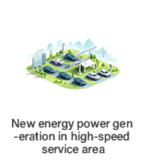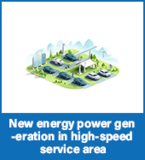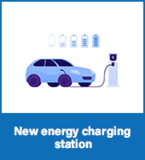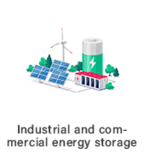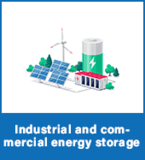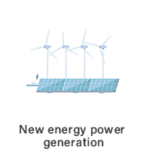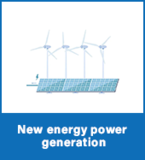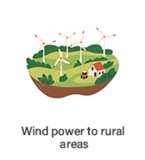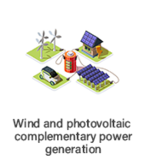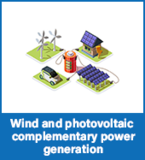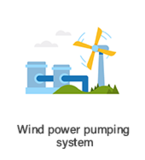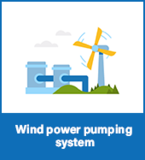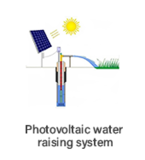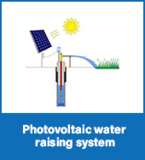NEW ENERGY CHARGING STATION
Project Overview:
The photovoltaic wind power vehicle charging station solution is a comprehensive system that integrates photovoltaic power generation, wind power generation, energy storage technology, and intelligent charging management. The system aims to provide green, low-carbon, and sustainable charging services for electric vehicles through the utilization of renewable energy sources (solar and wind), while reducing dependence on traditional energy sources and promoting environmental protection and sustainable development.
System composition:
一、 Photovoltaic power generation system
Photovoltaic modules: Select efficient and durable photovoltaic panels, such as monocrystalline silicon or polycrystalline silicon photovoltaic modules, and install them on the roof of charging stations, sunshades, or surrounding open spaces to maximize the utilization of solar energy resources.
Inverter: Convert the direct current generated by photovoltaic panels into alternating current for use in charging stations or integration into the power grid.
Bracket and installation: Design a reasonable bracket structure to ensure stable installation of photovoltaic panels and adjust them to the optimal tilt angle to improve power generation efficiency.
二、 Wind power generation system
Wind turbines: Select suitable models and quantities of wind turbines based on the assessment of wind resources in the area where the charging station is located. Wind turbines should be installed in open and unobstructed areas to ensure optimal power generation efficiency.
Tower and foundation: Design stable tower and foundation structures to support wind turbines and withstand harsh weather conditions such as strong winds.
三、 Intelligent charging system
Charging station: equipped with AC charging station and DC fast charging station to meet the charging needs of different electric vehicles. Charging stations should have functions such as intelligent recognition, automatic billing, and remote monitoring.
Charging management platform: Establish an intelligent charging management platform to achieve remote monitoring, fault warning, automatic scheduling and other functions of charging piles. Users can search for charging station information, schedule charging, pay fees, etc. through mobile apps or websites.
四、 Energy storage system
Energy storage battery: Select high-capacity, long-life, and high-efficiency energy storage batteries (such as lithium-ion batteries) to store excess electricity generated by photovoltaic and wind power generation, in order to provide power support during peak electricity demand or insufficient new energy generation.
Battery Management System (BMS): Real time monitoring of the status of energy storage batteries, including battery level, voltage, temperature, etc., to ensure safe and stable operation of the batteries.
五、Grid connection and dispatch system
Grid connected equipment: Connect photovoltaic power generation systems, wind power generation systems, and energy storage systems to the grid to achieve grid connected power generation and surplus electricity grid connection.
Energy Management System (EMS): Based on the power demand of charging stations and the situation of new energy generation, it intelligently schedules the power output of photovoltaic power generation, wind power generation, and energy storage systems to ensure the stability and reliability of power supply to charging stations.
Project implementation steps:
5. Operation management and maintenance: Establish an operation management system, develop operation and maintenance plans, conduct daily inspections, maintenance, and troubleshooting of the system. At the same time, monitoring and analyzing the operation data of charging stations through a data analysis platform provides a basis for optimizing operational strategies.
Social and economic benefits:
一、Social benefits
Reduce dependence on traditional energy sources, lower carbon emissions, promote environmental protection and sustainable development. Provide convenient and green charging services for electric vehicle users, and enhance public acceptance and utilization of new energy vehicles.
二、Economic benefits
By constructing and operating new energy generation systems, the cost of electricity at charging stations can be reduced and economic benefits can be improved. Utilize the surplus electricity grid policy to sell excess electricity to power grid companies and increase the revenue source of charging stations. In addition, with the continuous expansion of the electric vehicle market, the charging station business will also usher in opportunities for rapid growth.



